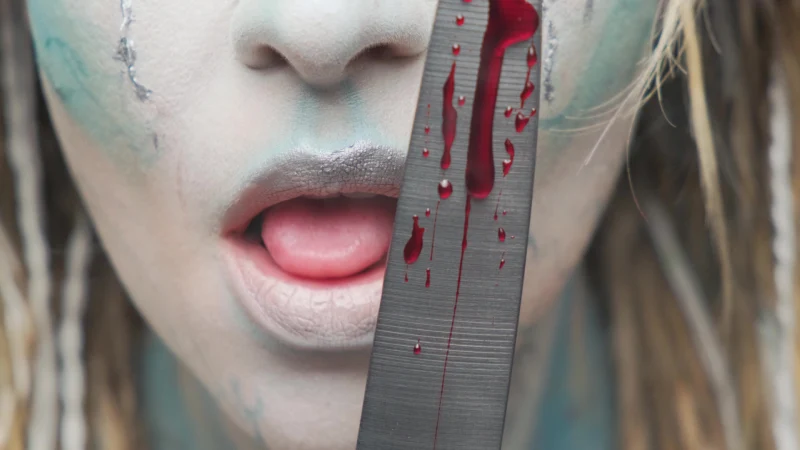Throughout history, redheads have been the subject of fascination, fear, and a fair bit of wild imagination. The striking hue of their hair, seen in only about 2% of the global population, has spurred theories ranging from scientific curiosity to outright superstition. While we now understand the genetic causes of red hair, historical interpretations reveal more about human nature than biology. These theories, rooted in fear, mysticism, and even pseudoscience, range from amusingly odd to downright bizarre. As we go deeper down the rabbit hole of these theories they only seem to escalate in their weirdness.
Let’s unravel the science of red hair and dive into the strangest beliefs about redheads, tracing how society’s imagination snowballed into more peculiar, and sometimes unsettling, territory.
What Causes Red Hair?

Before diving into the rabbit hole of wild theories, let’s ground ourselves in science. Red hair is caused by a genetic mutation in the MC1R gene, which controls melanin production. People with two copies of the mutated gene produce more pheomelanin (red pigment) than eumelanin (brown or black pigment), resulting in red hair. This recessive gene is most common in northern and western European populations, particularly in Scotland, Ireland, and Wales.
Interestingly, redheads often have fair skin and a heightened sensitivity to UV rays, but they also tend to produce their own vitamin D more efficiently. This adaptation likely helped their ancestors survive in low-sunlight regions. While science explains the “why” of red hair, it doesn’t account for the bizarre beliefs that have followed redheads for centuries.
1. Beings with No Souls

One of the most persistent and downright cruel superstitions about redheads is the idea that they lack souls. While this concept has been popularized in modern times through comedy, notably in a satirical South Park episode, its roots run far deeper. The episode famously claimed redheads were born without souls, a joke that hit home for many, including Mikey Kittrell, a YouTube star who recorded an emotional video responding to the ridicule he faced after the show aired. The cultural impact of such claims highlights the longevity of a stereotype that, shockingly, has persisted for centuries.
Historically, the “soulless redhead” trope wasn’t just playground mockery, it was rooted in deep-seated fear and superstition. In medieval Europe, redheads were often seen as “other,” their rarity and striking appearance making them easy targets for suspicion. Some societies even believed they had sold their souls to Satan, binding them in eternal service to the Dark Lord. Ironically, while some claimed redheads lacked humanity, others painted them as vibrant and intensely alive, passionate to the point of danger as we see further. Were they lifeless beings doomed to serve evil or vibrant embodiments of vitality? The paradox only underscores how historical fears of the unfamiliar could spiral into the bizarre and contradictory.
2. Violent Hotheads

The stereotype of redheads being fiery and short-tempered likely stems from the symbolic associations of their hair color. Red is universally seen as the color of passion, danger, and intense emotion which plays a huge role in building such false prejudices against redheads. Ancient Greeks believed red-haired individuals were more prone to anger, while cultural proverbs only reinforced the association. A famous Russian saying claims, “There was never a saint with red hair,” implying an innate lack of virtue. The French were no kinder, declaring, “Redheaded women are either violent or false, and usually are both.” These beliefs unfairly cast redheads as naturally aggressive and untrustworthy.
Adding to this was the depiction of Satan in medieval art, often portrayed with fiery red hair. This association didn’t help redheads’ reputations, painting them as chaotic or even diabolical. Modern science, meanwhile, complicates the picture. Some studies suggest redheads are more sensitive to pain due to their unique genetic makeup. This heightened sensitivity might make them seem more reactive, but it’s hardly evidence of fiery tempers. Ironically, while many redheads are calm and composed, these historical and cultural biases have cemented a stereotype that’s hard to shake. Far from fair, these sweeping judgments have added layers of unwarranted stigma to redheads’ already rare and striking identity.
3. On the Verge of Extinction

Every few years, headlines emerge with dramatic proclamations of an impending “extinction” of redheads, a notion based more on pseudoscience and sensationalism than genetics. The story usually goes that because the MC1R gene mutation responsible for red hair is recessive, fewer red-haired individuals are being born, leading to their inevitable disappearance. One particularly dubious report, funded by a hairstyling company with ties to hair dye manufacturers, claimed that redheads weren’t reproducing at a sufficient rate to sustain their genetic legacy. The not-so-subtle marketing ploy? To encourage people to buy red hair dye to “preserve” the red hue. Clever, but scientifically unfounded.
Another bizarre extinction rumor tied redheads to climate change. According to this theory, harsher sunlight caused by global warming would disproportionately harm fair-skinned redheads, leading to shorter lifespans and a dwindling population. Like its predecessors, this claim crumbled under scrutiny. So relax cause Redheads aren’t going anywhere anytime soon, though the wild speculation about their survival seems to be thriving.
4. The Original Inhabitants of Atlantis

One of the strangest and most fantastical theories surrounding redheads ties them to the mythical lost city of Atlantis. In the late 19th and early 20th centuries, pseudo-historians like Ignatius Donnelly posited that the Atlanteans were a race of advanced, red-haired beings. The theory gained traction with the discovery of ancient red-haired mummies in regions as far-flung as Peru, Egypt, and China. These striking finds, likely the result of natural pigmentation preservation and deliberate mummification practices, sparked wild speculation. Many believed that redheads had spread across the globe after fleeing their submerged homeland, carrying with them the mystique of Atlantis.
As if this wasn’t far-fetched enough, some versions of the legend claimed that everyone in Atlantis was redheaded, with their flaming locks symbolizing their supposed divine or mystical origin. The story even extends to mythical figures like Prince Idon of Mu, said to be the “first-ever redhead,” who was supposedly transformed by witnessing a spectacular sunset in Atlantis. Ironically, while modern science dates red hair’s genetic mutation to around 50,000 years ago, long after Atlantis would have supposedly sunk, these stories highlight humanity’s love for weaving mythology around the mysterious. It’s less about truth and more about imagination, using red hair as a striking symbol of otherworldly origins.
5. Bloodsucking Vampires in the Afterlife

During the Middle Ages and even earlier, redheads were burdened with one of the most dreadful superstitions that they were destined to become vampires after death. This idea wasn’t exclusive to medieval Europe as ancient Greeks also subscribed to the notion that red-haired individuals, with their intense and mysterious nature, were doomed to transition into bloodsucking revenants in the afterlife. The myth likely stemmed from their striking appearance, which seemed otherworldly in societies where dark hair was the norm. Combined with redheads’ susceptibility to sunlight, a fact that ironically aligns with vampire lore, it’s easy to see how the stereotype gained traction.
These eerie beliefs were part of a larger narrative about redheads’ connection to the supernatural. For example, while some societies, like the Romans, considered red hair a sign of good luck, even paying more for red-haired slaves, others saw it as a dangerous omen. The ancient Egyptians took their fear of red hair to chilling extremes, reportedly sacrificing redheaded men to appease the gods, and scattering their ashes over sacred graves. Whether they were feared as vampires or offered as divine sacrifices, redheads in history bore the weight of their uniqueness, often at the expense of their humanity. It’s a haunting reminder of how rarity and mystery can breed fascination and fear.
6. Good Luck Red

Amid the swirling storm of negative superstitions, some cultures have regarded redheads as harbingers of good luck and prosperity. As mentioned earlier, Ancient Romans, prized red-haired slaves above all others, paying a premium for their red-hot locks. They believed that owning a red-haired slave would bring fortune and favor, a stark contrast to the darker superstitions in other societies. Even in ancient Egypt, where redheads were occasionally sacrificed to curry favor with the gods, their unique appearance was also seen as a symbol of value and distinction.
In Poland, an even more charming belief persisted which stated that spotting three redheads together in one place was considered a sign of incredible luck. This superstition has evolved over time, with some modern interpretations suggesting that encountering three redheads could even win you the lottery. The idea of physically touching a redhead’s hair, as though it were a lucky charm, has also been a playful tradition in various cultures. These beliefs reflect a duality in human perception, where rarity and uniqueness can inspire both reverence and suspicion.
7. Ginger Jesus: The Controversy of Christ’s Hair Color

The question of whether Jesus was a redhead has intrigued theologians, artists, and historians alike. While there’s no definitive historical evidence about Christ’s hair color, medieval and Renaissance art often depicted him with red hair, sparking both reverence and controversy. For some, the fiery hue was a divine mark, symbolizing uniqueness and setting Jesus apart from the crowd. Others, however, saw it as a sign of moral ambiguity, influenced by the association of red hair with heightened sexuality and supposed moral degeneration in earlier societies.
This wasn’t confined to Jesus alone. Mary Magdalene, one of Christ’s closest disciples, was frequently depicted with flowing red hair, adding to the perception of redheads as passionate and intense. Even Eve, in Michelangelo’s iconic Temptation, was painted as a redhead; a symbolic nod to her role in the fall from grace. These depictions highlight a fascinating contradiction where red hair was both a mark of divine distinction and a signal of potential betrayal, as Judas Iscariot was also often portrayed with red locks. Was red hair a symbol of holiness, temptation, or deceit? The duality of these interpretations underscores society’s enduring struggle to reconcile the extraordinary with the familiar, especially in figures so central to human mythology.
8. Witchy Ways of the Red

During the European witch trials, red-haired women faced an outsized risk of being accused of witchcraft. Their red locks, already a rarity, made them stand out in a society where conformity often equated to safety. This uniqueness, combined with the stereotype of redheads as spirited and passionate, fueled suspicions that they were “cut from a different cloth.” In a time, rife with fear and superstition, being different was enough to draw accusations of witchcraft, and for redheads, that difference was literally written in their hair.
Between 1500 and 1660, during the height of Europe’s witch hysteria, it’s estimated that over 80,000 people were executed for suspected witchcraft. While records don’t specify how many were redheads, their rarity and distinctiveness suggest they likely made up a significant portion of those persecuted. The tragic irony is that redheads, celebrated in other contexts for their uniqueness and beauty, became scapegoats during these periods of upheaval. Their genetic rarity marked them as “different,” making them a convenient target for a society eager to find blame for its anxieties. One can’t help but wonder how many red-haired lives were cut short, and what impact might that have had on the gene pool today. The witch trials serve as a grim reminder of how societal fears can turn physical traits into fatal liabilities.
9. Egyptian Sacrificial Fertilizers

The ancient Egyptians had a complex and often unsettling relationship with redheads, associating them with Set, the god of chaos and desert storms. While this connection elevated redheads to a place of spiritual significance, it also made them targets of grim rituals. Historical evidence suggests that red-haired individuals were sometimes sacrificed in fertility ceremonies to appease the gods, with their remains burned and their ashes spread across farmlands to ensure abundant harvests. This practice, recorded in James Frazer’s The Golden Bough, paints a chilling picture of how red hair, seen as rare and powerful, was used to serve societal needs—at great personal cost to the individuals themselves.
The Egyptians believed these sacrifices worked, pointing to the flourishing red and golden hues of their harvests as proof of divine favor. The irony is stark: the very trait that made redheads unique and valuable in one sense also rendered them expendable in another. While the idea of using ashes to fertilize fields may seem unthinkable now, it underscores the ancient world’s tendency to see human life as intertwined with the forces of nature and divinity, often in disturbingly literal ways. For redheads in ancient Egypt, their rarity was both a blessing and a curse—a mark of distinction that could turn deadly.
10. Products of ‘Unclean’ Sex

In medieval Europe, a particularly bizarre and judgmental belief held that red hair was the result of “unclean” or sinful sex acts. Specifically, it was thought that redheaded individuals were conceived during menstruation, a notion rooted in the era’s limited understanding of biology and its obsession with purity. In a time when religious doctrine dictated much of societal thinking, anything associated with excess or unrestrained passion was viewed with suspicion. And what could be more striking and “excessive” than blazing red hair?
This belief, though entirely unfounded, persisted for centuries. It does raise an amusing question of how medieval society explains the high prevalence of redheads in regions like Scotland and Ireland. Were they suggesting an epidemic of “unclean” conception in those areas? The idea is as absurd as the myth itself.
The irony, however, is striking. The same passion and sensuality that made redheads targets of scorn also made them muses in art and literature, where they were idealized as symbols of rich beauty and unrestrained allure. Were they sinners born of scandal or divine muses blessed with a magnetic presence? History, with all its contradictions, couldn’t seem to make up its mind.
Conclusion
Thankfully, most of the stigma surrounding red hair has faded, replaced by admiration for its unique beauty. Modern redhead festivals, like those in Ireland and the Netherlands, celebrate the vibrant diversity of red-haired individuals. Scientists, meanwhile, continue to explore the fascinating quirks of redhead genetics, from their sensitivity to anesthesia to their unique pain thresholds.
Redheads are no longer seen as witches, vampires, or sacrifices to the gods. Instead, they’re celebrated as a rare and beautiful expression of human diversity. And while the wild theories of the past may now seem absurd, they serve as a testament to the power of imagination and the enduring allure of a scorching mane.








